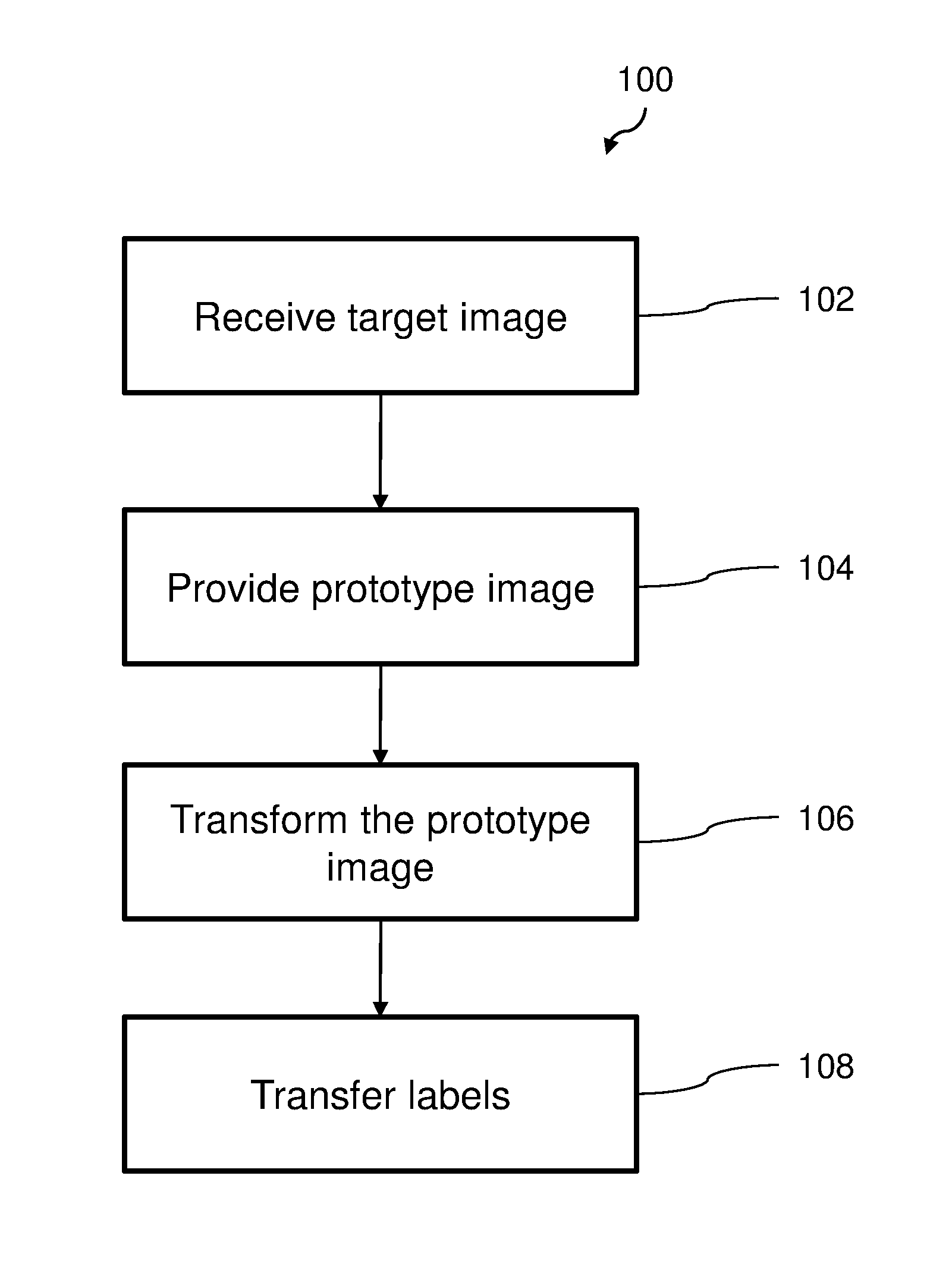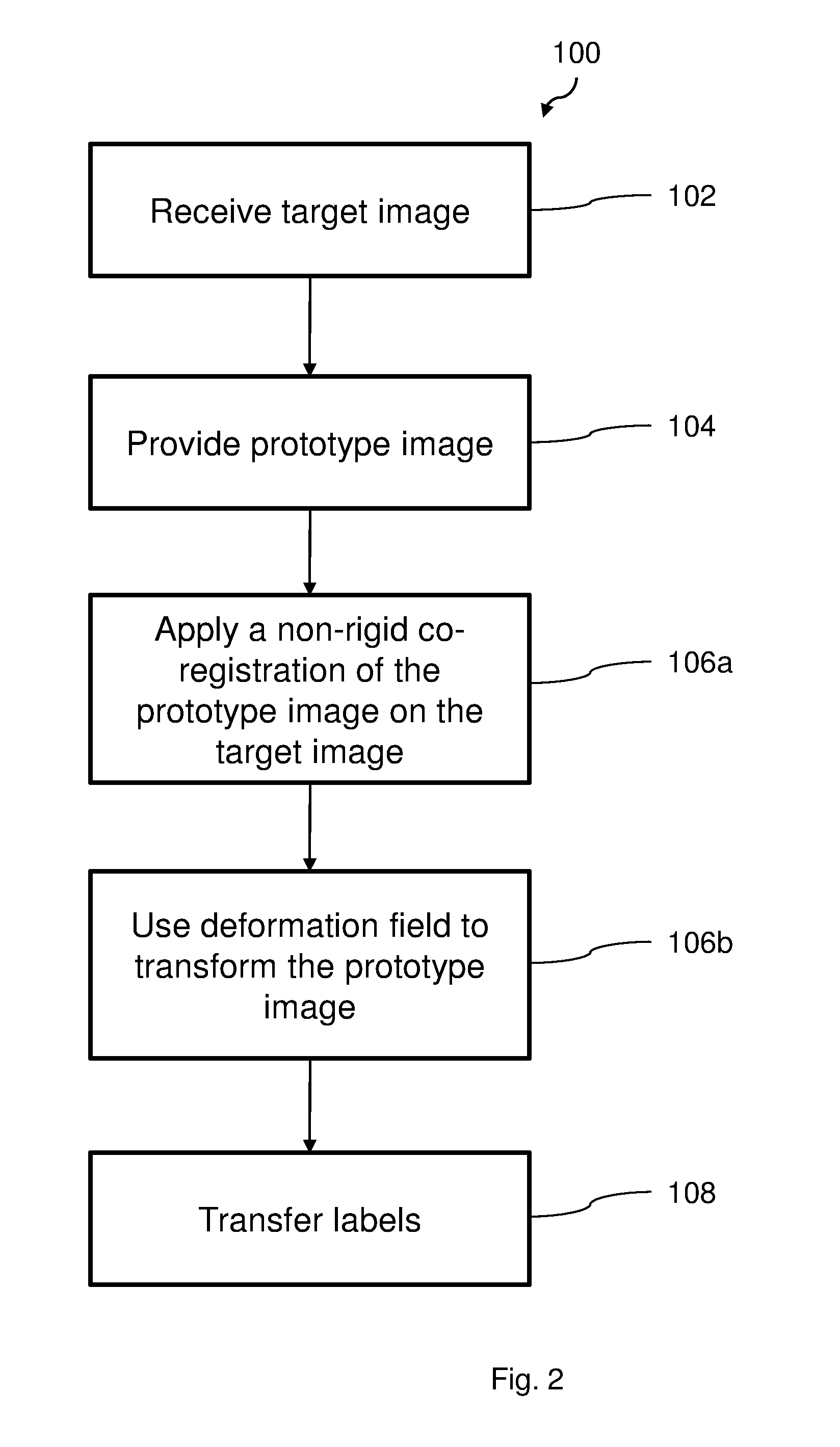Method of classification of organs from a tomographic image
a tomographic image and classification method technology, applied in image data processing, diagnostics, sensors, etc., can solve the problem that the identification and analysis of a previous image cannot be reused on a new image, and achieve the effect of extra robustness in classification
- Summary
- Abstract
- Description
- Claims
- Application Information
AI Technical Summary
Benefits of technology
Problems solved by technology
Method used
Image
Examples
Embodiment Construction
[0067]The present invention will be described more fully hereinafter with reference to the accompanying drawings, in which preferred embodiments of the invention are shown. This invention may, however, be embodied in many different forms and should not be construed as limited to the embodiments set forth herein; rather, these embodiments are provided so that this disclosure will be thorough and complete, and will fully convey the scope of the invention to those skilled in the art. In the drawings, like numbers refer to like elements.
[0068]FIG. 1 illustrates a flow chart of a method 100 according to an embodiment, for registration and classification of organs in a body. The method 100 comprises a first step 102 wherein a 3-dimensional tomographic image is received. The image is provided from a medical scanning apparatus, such as a magnetic resonance (MR) scanner or a computed tomography (CT) scanner. The received tomographic image is a target image, i.e. the image in which organs is ...
PUM
 Login to View More
Login to View More Abstract
Description
Claims
Application Information
 Login to View More
Login to View More - R&D
- Intellectual Property
- Life Sciences
- Materials
- Tech Scout
- Unparalleled Data Quality
- Higher Quality Content
- 60% Fewer Hallucinations
Browse by: Latest US Patents, China's latest patents, Technical Efficacy Thesaurus, Application Domain, Technology Topic, Popular Technical Reports.
© 2025 PatSnap. All rights reserved.Legal|Privacy policy|Modern Slavery Act Transparency Statement|Sitemap|About US| Contact US: help@patsnap.com



